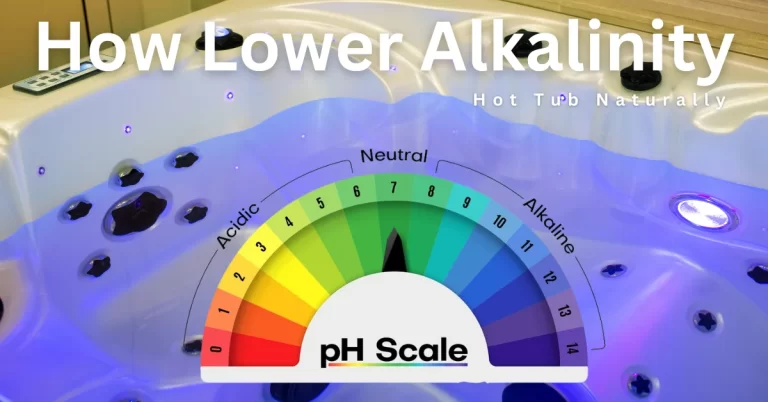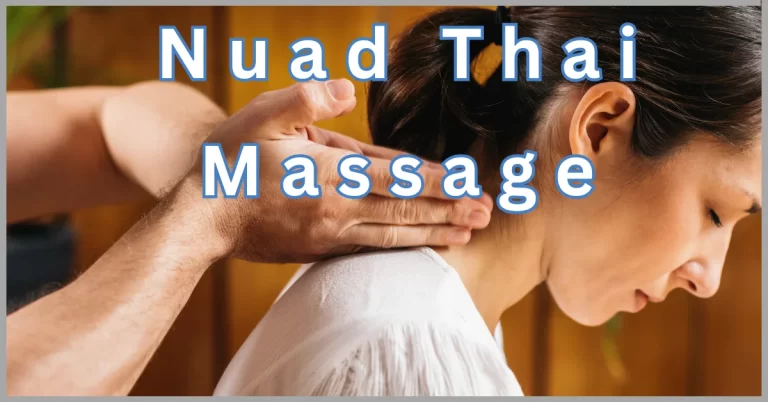Discover the Power of Deep Tissue Massage Therapy
Uncover the benefits of deep tissue massage therapy and how it can alleviate pain and improve your overall well-being. Learn more now!
Introduction
Deep tissue therapy is a massage technique that targets the deeper layers of muscles and connective tissues to alleviate pain and tension. It benefits chronic pain, posture improvement, flexibility, and stress reduction. Techniques include Swedish, sports, trigger points, myofascial release, and neuromuscular therapy.
Understanding Deep Tissue Massage Therapy
By understanding the principles and techniques, individuals can make informed decisions about their therapeutic options and work with their massage therapist to achieve their desired outcomes.
How its works
Deep tissue therapy applies sustained pressure and friction to the deep layers of muscle and connective tissue in the body. This helps to break down the muscle adhesions and knots that can cause pain and discomfort and restore proper function to the affected area.
The difference between other types of massage therapy
One of the critical differences between deep tissue therapy and other types of massage therapy is the level of pressure used. While other types of massage may focus on relaxation and stress reduction, deep tissue therapy focuses on relieving pain and restoring proper function to the affected area.
Comparison Table: Deep Tissue Therapy vs. Other Massage Techniques
| Feature | Deep Tissue Massage Therapy | Swedish Massage | Sports Massage |
|---|---|---|---|
| Purpose | To target deeper layers of muscle and connective tissue | To promote relaxation and relieve tension | To enhance athletic performance and prevent injury |
| Techniques Used | Deep pressure, trigger point therapy, friction | Long strokes, kneading, and friction | Stretching, compression, and trigger point therapy |
| Pressure Level | Intense | Light to moderate | Varies based on athlete’s needs |
| Ideal for | Individuals with chronic pain, tight muscles, and tension | Individuals looking for relaxation and stress relief | Athletes and active individuals |
| Benefits | To target more profound layers of muscle and connective tissue | Relaxation, stress relief, improved circulation | Improved athletic performance, injury prevention |
NOTE: It is ideal for individuals with chronic pain and tension, while Swedish massage is best for those looking to promote relaxation and relieve stress. Sports massage, on the other hand, is designed specifically for athletes and active individuals. Understanding the differences between these massage techniques allows you to choose the best therapy to meet your individual needs and goals.
Who can benefit from this therapy?
It can benefit a wide range of individuals, including athletes, manual laborers, and anyone who experiences chronic pain or tension in their muscles. It is also a popular therapeutic option for individuals who have suffered an injury or have a condition such as sciatica or back pain.
Understanding Deep Tissue Massage Therapy
They apply sustained pressure and friction to the body’s deep muscle and connective tissue layers. This helps to break down the muscle adhesions and knots that can cause pain and discomfort and restore proper function to the affected area.
One of the critical differences between deep tissue therapy and other types of massage therapy is the level of pressure used. While other types of massage may focus on relaxation and stress reduction, deep tissue therapy focuses on relieving pain and restoring proper function to the affected area.
It can benefit a wide range of individuals, including athletes, manual laborers, and anyone who experiences chronic pain or tension in their muscles. It is also a popular therapeutic option for individuals who have suffered an injury or have a condition such as sciatica or back pain.
By understanding the principles and techniques of deep tissue therapy, individuals can make informed decisions about their therapeutic options and work with their massage therapist to achieve their desired outcomes.
Types
| Type | Intent | Pressure | Area of Focus |
|---|---|---|---|
| Trigger Point Therapy | To relieve pain and tension in specific areas of the body | Intense | Trigger points (painful knots in muscles) |
| Myofascial Release | To reduce tension and improve mobility | Moderate | Connective tissue (fascia) |
| Friction Massage | To increase blood flow and break down scar tissue | Intense | Deep layers of muscle and tissue |
| Neuromuscular Therapy | To balance the nervous system and relieve pain | Intense | Muscles and nerve pathways |
Each type of deep tissue therapy has its specific intent and area of focus. Trigger point therapy is designed to relieve pain and tension in specific body areas, while myofascial release targets the connective tissue (fascia) to reduce tension and improve mobility. Friction massage increases blood flow and breaks down scar tissue, and neuromuscular therapy aims to balance the nervous system and relieve pain.
The pressure used in deep tissue therapy can range from moderate to intense, depending on the type of therapy and the individual’s specific needs. However, regardless of the type of therapy, deep tissue massage can provide numerous benefits, including pain relief, improved mobility and flexibility, reduced stress, and a boosted immune system.
Techniques Used in Deep Tissue Massage Therapy
- Swedish massage: Swedish massage is a type of massage that focuses on promoting relaxation and circulation. It is often used as a foundation for other types of massage, including deep tissue therapy.
- Sports massage: Sports massage is a therapy for athletes and active individuals. It helps to improve performance, prevent injury, and reduce recovery time.
- Trigger point therapy: Trigger point therapy focuses on releasing specific points of tension in the muscles, known as trigger points. By applying pressure to these points, the therapist can help to relieve pain and tension in the affected area.
- Myofascial release: Myofascial release is a massage therapy that focuses on releasing the fascia, the connective tissue surrounding and supporting the muscles. This can help to restore proper function to the affected area and relieve pain and tension.
- Neuromuscular therapy: Neuromuscular therapy is a massage therapy that focuses on releasing muscle tension and restoring proper function to the nervous system. This can help to relieve pain and improve the range of motion.
Choosing a Deep Tissue Massage Therapist
When choosing, it’s essential to consider several critical factors, including:
- Experience and qualifications: Look for a therapist who has received proper training and has experience performing deep massage therapy. This can help ensure that you receive the highest quality of care.
- Reputation: Read reviews and ask for recommendations from friends and family to find a therapist with a positive reputation.
- Comfort level: Choosing a therapist with whom you feel comfortable and can communicate openly is essential.
- Availability: Consider the therapist’s availability, including their hours of operation and location, to ensure that it’s convenient for you to receive treatment.
- Cost: Compare the cost of different therapists to find one that fits within your budget. Remember that the cost of deep massage therapy can vary widely based on the therapist’s experience and qualifications.
Preparing for a Session
- Hydrate: Drink plenty of water before your session to ensure your muscles are hydrated and ready to work.
- Wear comfortable clothing: Wear loose clothing that allows easy access to the areas that will be worked on during the session.
- Avoid heavy meals: Avoid eating them before your session, as this can make it harder for the therapist to work on your muscles.
- Communicate with your therapist: Let your therapist know about any areas of concern you would like to focus on during the session. This will help them tailor the session to meet your specific needs.
- Relax: Take a few deep breaths and try to relax before your session. This will help you get the most out of your therapy session and achieve your desired outcomes.
Benefits
- Relieves pain and tension: It can help relieve pain and tension in the muscles, which various factors, including injury, poor posture, and overuse, can cause.
- Improves range of motion: It can improve the range of motion and flexibility by releasing muscle tension and restoring proper function to the affected area.
- Promotes relaxation: It can also promote relaxation and stress reduction, helping to improve overall well-being.
- Boosts immune system: Studies have shown that massage therapy can boost the immune system and improve overall health.
- Helps with recovery: For athletes and active individuals, it can help with recovery by reducing muscle soreness and improving performance.

Risks and Precautions
While this therapy offers many benefits, there are also some risks and precautions to be aware of. Some of the potential risks and precautions include:
- Pain and discomfort: It can sometimes cause discomfort and pain, especially during the initial stages of treatment.
- Bruising can sometimes cause bruising, especially in areas with tension or tightness.
- Worsening of underlying conditions: If an individual has an underlying medical condition, such as osteoporosis or a herniated disk, it can sometimes exacerbate the condition and cause further discomfort.
- Infection: If proper hygiene and sanitation practices are not followed, it can pose a risk of infection.
- Contraindications: Some specific contraindications or conditions make it inappropriate or dangerous. Examples of contraindications include certain types of cancer, blood clots, and certain medications.
Tips for Getting the Most Out of
Following tips and best practices is essential to get the most out of deep tissue therapy and achieving your desired outcomes. Some suggestions for getting the most out of deep massage therapy include:
- Be open and honest with your therapist: Let your therapist know about any areas of concern you would like to focus on during the session. This will help them tailor the session to meet your specific needs.
- Be initiative-taking: Take an active role in your therapy by stretching and taking care of your posture between sessions to maximize the benefits of your treatment.
- Stay hydrated: Drinking water before and after your therapy session can help improve the effectiveness of the treatment and reduce the risk of discomfort.
- Give yourself enough time: Deep tissue massage therapy can be intense, so give yourself enough time to prepare for and recover properly.
- Communicate with your therapist: If you experience discomfort or pain during the session, let your therapist know so they can adjust the treatment accordingly.
Standard Techniques
- Friction:
- This technique involves applying deep, transverse pressure to the tissues to help release adhesions and break down scar tissue.
- Trigger point therapy:
- This technique involves applying pressure to specific muscle points that cause pain and tension, known as trigger points.
- Myofascial release:
- This technique involves stretching and releasing the fascia, the connective tissue surrounding the muscles and joints, to help improve mobility and reduce pain.
- Neuromuscular
- Therapy involves applying pressure to specific points along the nervous system to help relieve pain and improve function.
- Structural integration:
- This technique involves manipulating the body’s structural alignment to improve posture and reduce pain.
The Benefits of Incorporating Deep Tissue Massage Therapy into Your Wellness Routine
- Pain relief: It can help relieve chronic pain, as well as pain from specific conditions such as arthritis, back pain, and headaches.
- Improved mobility and flexibility: By releasing tension and tightness in the muscles and fascia can help improve mobility and flexibility, reducing the risk of injury.
- Reduced stress and anxiety: It can help reduce stress and anxiety by promoting relaxation and reducing physical tension.
- Improved sleep: It can help improve sleep quality and duration by reducing physical and psychological tension.
- Boosted immune system: It has been shown to boost the immune system, helping the body fight illness and infection.
How do I find a therapist?
- Ask for referrals: Ask friends, family members, or coworkers if they have a therapist they can recommend. This can be an excellent way to find someone who has already been tried and evaluated.
- Check credentials: Look for therapists certified by a reputable organization, such as the National Certification Board for Therapeutic Massage and Bodywork (NCBTMB).
- Search online: Use the internet for deep tissue massage therapists in your area. Look for reviews and testimonials to understand the therapist’s expertise and reputation.
- Check with local health and wellness centers: Many gyms, spas, and wellness centers offer deep tissue therapy as a service. You can also contact local chiropractors or physical therapists to see if they have any recommendations.
- Please schedule a consultation: Once you have a few names, schedule consultations with each therapist to get a feel for their approach and to discuss your specific needs and goals.
- Consider the cost: It can be expensive, so consider each session’s cost when deciding. Some therapists offer packages or discounts, so ask about any exclusive offers.
To access additional articles related to ‘Hot Tub Patio‘ or to read more posts related to this topic, please visit the Massage category.
Frequently Asked Questions (FAQs)
Q. What are the benefits of deep massage therapy?
Deep tissue therapy’s benefits include the following:
- Pain relief.
- Improved mobility and flexibility.
- Reduced stress and anxiety.
- Improved sleep.
- A boosted immune system.
Q: How does deep tissue therapy work? A: Deep tissue therapy applies deep pressure to muscles and connective tissue to release tension and promote relaxation.
Q: Who is deep tissue massage therapy for? A: Deep tissue therapy is suitable for individuals of all ages and fitness levels looking to relieve pain, reduce tension, or improve mobility.
Q: What should I expect during a deep tissue therapy session? A: During a deep tissue therapy session, you will lie on a massage table, and your therapist will apply deep pressure to target areas of tension and discomfort.
Q: Is deep tissue massage therapy safe? A: Deep tissue therapy is safe when performed by a trained and licensed therapist, but it’s essential to consult your doctor if you have any medical conditions or concerns.











